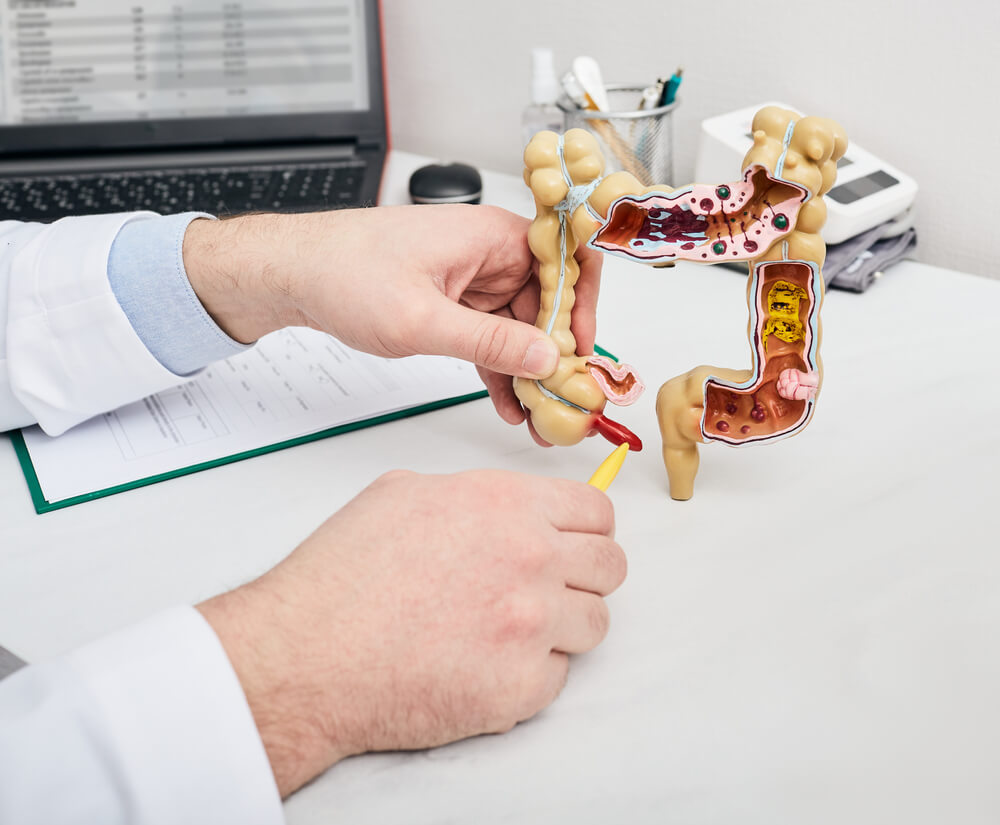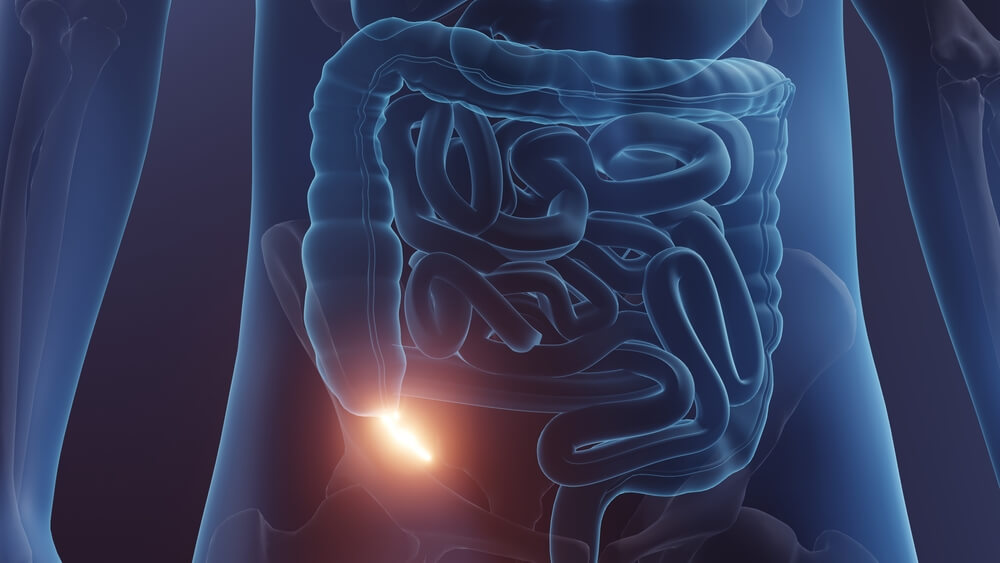What is Appendicitis?
Appendicitis is a medical condition characterized by the inflammation of the appendix, a small, finger-like pouch attached to the large intestine. This inflammation can lead to acute and intense pain in the lower abdomen. While the exact cause of appendicitis isn’t always clear, it is often associated with blockages or infections resulting from fecal matter, enlarged lymphoid tissue, tumors, inflammatory bowel disease, or even injury to the abdomen.
In this article, Dr. Omar Rashid and his expert team will talk about inflammation of the appendix, discuss acute appendicitis causes and the hallmark signs, and discuss treatment.
Don’t Ignore the Signs of Acute Appendicitis

One of the most critical aspects of appendicitis is its potential to escalate rapidly. If left untreated, the appendix can burst, leading to a medical emergency. A burst appendix releases bacteria from the intestines into the abdominal cavity, causing a severe infection known as peritonitis. This infection can further spread into the bloodstream, potentially leading to life-threatening complications such as sepsis.
Due to the severe risks associated with a burst appendix, the standard and most effective treatment for appendicitis is the surgical removal of the appendix, a procedure called an appendectomy. The good news is that the human body can function without an appendix, as it doesn’t serve any essential purpose.
Acute Appendicitis vs. Chronic Appendicitis
Appendicitis is primarily an acute condition, meaning it develops suddenly and progresses rapidly. This form of appendicitis is the most common and well-documented. However, there is also a rare condition known as chronic appendicitis. Chronic appendicitis is characterized by persistent, on-and-off irritation of the appendix over an extended period without significantly worsening symptoms. While less common, healthcare providers treat chronic appendicitis with the same level of urgency as the acute form due to the risk of it becoming acute at any time.
Prevalence of Appendicitis
Appendicitis is relatively common, especially among individuals aged 10 to 30. Children, teenagers, and even younger children can develop appendicitis, though its frequency tends to peak during the teenage years. In the United States, approximately 5% of the population will experience acute appendicitis at some point in their lives. It is the leading cause of abdominal pain requiring emergency surgery. Chronic appendicitis, on the other hand, affects only about 1% of the population.
Symptoms of Appendicitis
The classic symptoms of appendicitis include abdominal pain, nausea, and loss of appetite. However, it’s important to note that not everyone with appendicitis experiences these symptoms in the same way. Typical appendicitis pain begins near the belly button and later shifts to the lower right abdomen, where the appendix is located. Pain tends to intensify and become more localized as the condition progresses. Some individuals may also experience additional symptoms such as fever, malaise, a swollen belly, urinary changes, bowel issues like constipation or diarrhea, and even signs of bowel paralysis.
Diagnosis and Tests
Diagnosing appendicitis typically involves a thorough medical history review and a physical examination. Healthcare providers may use specific signs such as McBurney’s point tenderness, rebound tenderness (Blumberg’s sign), and other indicators like cough-induced pain (Dunphy’s sign), pressure-induced pain (Rovsing’s sign), and muscle-related signs (Psoas and Obturator signs) to aid in the diagnosis. Blood tests, urine tests, abdominal ultrasound, CT scans, and MRI scans may also be used to confirm appendicitis and rule out other conditions.
Possible Complications
Appendicitis can lead to various complications that may progress in stages. These include ischemia and necrosis of the appendix, gangrene or perforation of the appendix, abscess or phlegmon formation, and peritonitis. Peritonitis, which results from the spread of infection into the abdominal cavity, can be especially dangerous. Untreated appendicitis can also result in sepsis, a life-threatening condition that can affect multiple organs.
Acute Appendicitis: A Closer Look

Acute appendicitis is a sudden and severe inflammation of the appendix, which typically occurs without warning. This condition often starts with a dull, cramp-like pain around the belly button, which may then migrate to the lower right side of the abdomen. This characteristic shift in pain location, known as migration or “traveling” of pain, is one of the hallmark signs of acute appendicitis. As time passes, the pain tends to intensify and become more localized in the lower right abdomen, a region known as McBurney’s point.
The severity of pain can vary from person to person, but it often becomes excruciating. Individuals with acute appendicitis may also experience other distressing symptoms, including nausea, vomiting, a swollen abdomen, fever, chills, loss of appetite, constipation, or diarrhea. As the appendix becomes increasingly inflamed, it can irritate nearby tissues and nerves, exacerbating these symptoms.
In the absence of medical intervention, acute appendicitis can escalate quickly. Within 48 to 72 hours after the initial onset of symptoms, the appendix may rupture or burst. This is a dire situation, as it allows the contents of the appendix, including bacteria and waste, to spill into the abdominal cavity. The resulting infection, known as peritonitis, can lead to a cascade of life-threatening complications. Therefore, it is imperative to seek immediate medical attention upon suspecting or experiencing symptoms of acute appendicitis.
The diagnosis of acute appendicitis typically involves a combination of clinical assessment and medical imaging. Healthcare providers will inquire about your medical history, perform a physical examination, and may order blood tests to check for signs of infection and inflammation. Medical imaging techniques, such as abdominal ultrasound or computed tomography (CT) scans, are often employed to visualize the appendix and assess its condition.
Once diagnosed, prompt treatment is crucial. The primary course of action is to surgically remove the inflamed appendix through a procedure known as an appendectomy. This can be performed through traditional open surgery or laparoscopic surgery, which involves smaller incisions and generally results in a quicker recovery.
The good news is that most people with acute appendicitis can recover fully with early recognition, timely medical intervention, and the removal of the appendix. The appendix itself doesn’t serve any essential function in the body, and living without it does not typically lead to any long-term health issues. Therefore, if you or someone you know experiences symptoms suggestive of acute appendicitis, it’s vital to act swiftly and seek medical help to ensure the best possible outcome.
Opt for Expert Help
Living with appendicitis is not advisable, as it is a medical emergency that requires immediate attention. If you suspect you have appendicitis or experience symptoms like abdominal pain, seek medical attention promptly.
In summary, appendicitis is a condition marked by inflammation of the appendix, which can rapidly progress to a medical emergency if not treated promptly. Understanding the symptoms, seeking early medical intervention, and undergoing an appendectomy when necessary is critical to managing this condition effectively.
That said, you can always feel free to reach out to us. Doctor Rashid and his expert team are more than ready to educate you on the topic.


